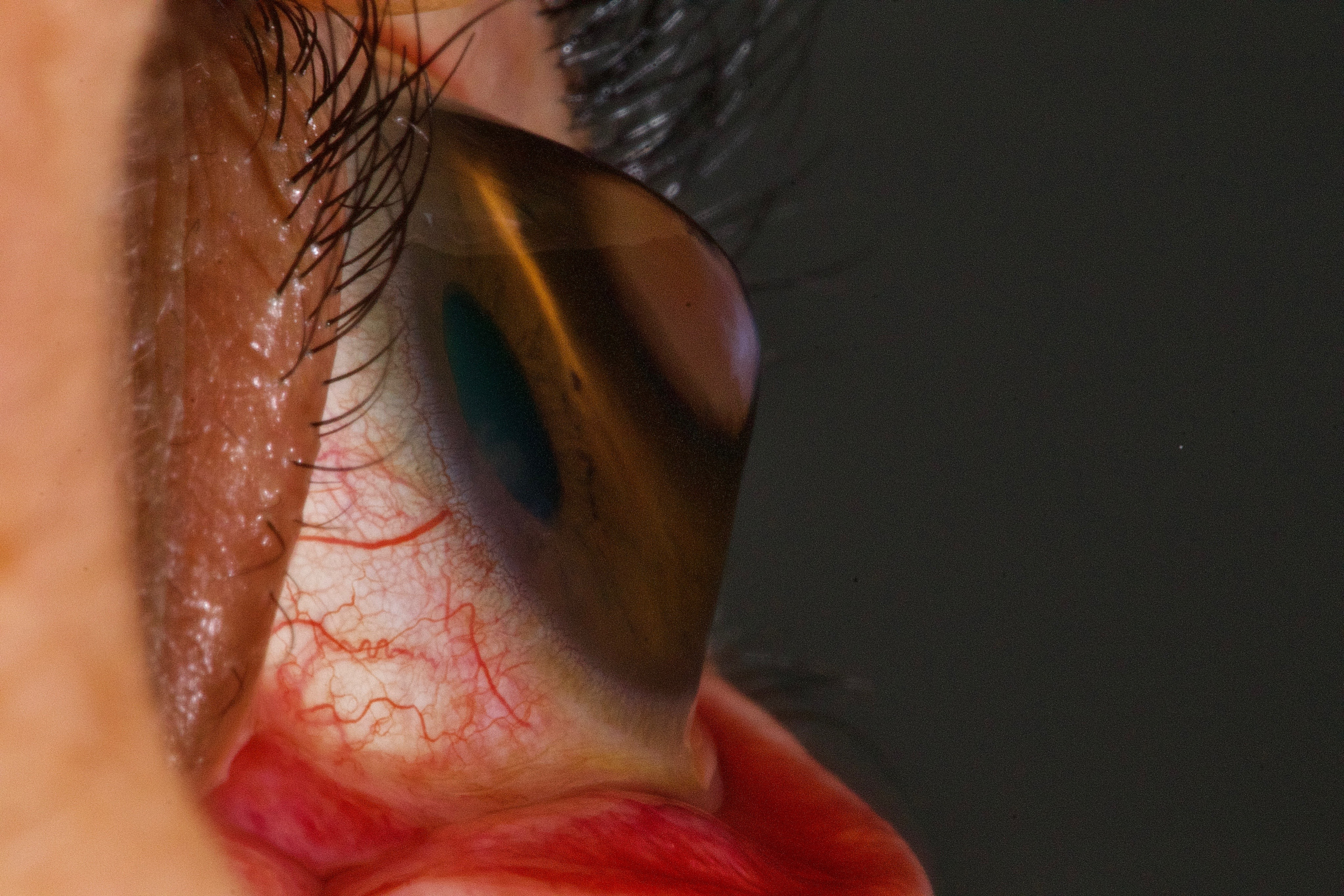 |
| This study’s cohort saw association of systemic connective tissue hyper-elasticity manifestation with keratoconus in males, but not females, suggesting a common X-linked underlying pathology may contribute to a generalized tissue hyperlaxity phenotype. Photo: Irving Martinez Navé. Click image to enlarge. |
Several diseases involving connective tissue hyperlaxity and collagen disturbances, including Ehlers-Danlos, osteogenesis imperfecta, congenital hip dysplasia and more, have been linked to corneal ectasia, specifically keratoconus. Accordingly, researchers in Israel recently wanted to illustrate just how prevalent a correlation is between keratoconus and various systemic manifestations of tissue hyperlaxity.
Medical records of Israeli adolescents and young adults were reviewed. With a total of 938,411 records included, prevalence rates of ligament injuries, habitual orthopedic deformities and umbilical/inguinal hernia were evaluated in cases with and without keratoconus. With a prevalence of 0.16% in the study sample, keratoconus was significantly more likely to be diagnosed in patients with genu varum/valgus, pes planus, scoliosis and umbilical/inguinal hernias, which remained significant after multivariate analysis. However, joint injuries, including ankle sprains, shoulder dislocation and knee ligament and menisci injuries were found to be not related.
Consequently, the study researchers believe that the link of keratoconus with connective tissue hyperlaxity manifestations of the knees, feet, spine and abdomen may be indicative of “a generalized connective tissue disorder, rather than just a local ocular phenomenon,” they explained in their paper for Contact Lens and Anterior Eye.
Further validating these findings are the demographic characteristics comparable to previous reports. As well, greater height, weight and BMI were all related to keratoconus, also previously reported in literature. Prevalence was found to be 160 cases per 100,000, also similar to prior research, the team notes in their article.
The authors explain that keratoconus is caused in part by corneal infrastructure deterioration, mainly composed of type I collagen, which also is a main component of tendons and the abdominal wall fascia, relating it to the conditions studied here. However, types III, V and XII collagen have also been linked to keratoconus.
Inguinal hernia was found to persist in 0.8% of people in this study, which follows the overall incidence of 0.8% to 4.4%. Collagen formation abnormalities have been observed in inguinal hernia patients, mainly in types I and III. The researchers posit that the association between keratoconus and hernia in this study, as well as the shared genetic component of a LOX gene mutation on chromosome 5, raises suspicion of common inheritance. Even further, elevated serum matrix metalloproteinase levels have been observed in direct and indirect inguinal hernias, while tears of keratoconus patients also display an elevated level.
Generalized connective tissue hyperlaxity seems to increase the risk for both keratoconus and orthopedic pathologies like scoliosis, pes planus and genu varum/valgus, as mitral valve prolapse, which is another systemic connective tissue pathology manifestation, has been reported in joint hypermobility syndrome and keratoconic patients.
While larger joint injuries (shoulder, knee and ankle) encompass a wider variety of injuries to ligaments, menisci, bone and articular space, the lack of association with these pathologies and keratoconus in this study may not be evidence of real-world situation. Despite this, the researchers conclude that their findings “suggest the existence of a systemic underlying connective tissue pathology rather than a local one as a cause of keratoconus.”
Safir M, Satanovsky A, Hecht I, et al. The association between keratoconus and systemic manifestations of connective tissue hyperlaxity. Cont Lens Anterior Eye. July 19, 2023. [Epub ahead of print]. |

